
In July 2019, military forces of the Taliban (Islamic Emirate of Afghanistan) wrested control of Badakhshãn Province from the western-backed central government of Afghanistan. A rugged mountain province in northeast Afghanistan, sparsely populated Badakhshãn has relatively little economic significance—except for the remote upper Kokcha Valley, where Sar-e-Sang (or Sar-i-Sang) is the world’s premier source of lapis lazuli.
Just a few years earlier, the Afghan government had launched a program to develop the Sar-e-Sang lapis lazuli resource in a manner that would benefit the nation. But that hope is gone, at least for now, and the fall of Badakhshãn is having many ramifications: The Afghan government has lost a potential source of income; all newly mined lapis lazuli is being smuggled into Pakistan, and the Taliban is reaping millions of dollars per year in profit.
LONG AND INVOLVED HISTORY
Afghanistan has long been synonymous with lapis lazuli. This central-Asian nation has produced roughly 95 percent of all the lapis ever mined throughout history. The only other commercially significant supplies come from Russia, Chile, and the United States, but lapis from these sources does not match the Afghan material in color intensity, pyrite glitter, and overall visual appeal.
The saga of Afghan lapis reads like an epic of historical fiction that James Michener might have written. It was the first gemstone ever to be systematically mined and one of the most prized commodities carried by the ancient Silk Road caravans that once culturally and economically linked Asia, Africa, and Europe. As a gemstone, pigment, and inlay material, Afghan lapis has played major roles in Egyptian, Islamic, and European art.
This story is from the March 2020 edition of Rock&Gem Magazine.
Start your 7-day Magzter GOLD free trial to access thousands of curated premium stories, and 8,500+ magazines and newspapers.
Already a subscriber ? Sign In
This story is from the March 2020 edition of Rock&Gem Magazine.
Start your 7-day Magzter GOLD free trial to access thousands of curated premium stories, and 8,500+ magazines and newspapers.
Already a subscriber? Sign In
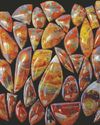
MORGAN HILL POPPY JASPER
In California, there are very few places to collect semi-precious stones. Many locations from the past have been either exhausted of the material or the land has been developed.
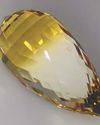
THE ACORN
The briolette gemstone has the same design attributes of a regular gemstone, however, the pavilion is elongated and the crown is usually domed. This is perfect for an elegant pendant, earrings or a pendulum.
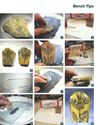
HOW TO PUT A PROTECTIVE CAP ON A CAB
To protect a specimen cab, often a cap is needed. In my case, I had a slab with the because of the color of the background and the pattern. This background had a more silicified consistency than most sandstones. It had no graininess like most sandstone, so I'm inclined to compare it to a jasper. The pattern was typical of a dendrite.

The Resilient Revival of Anne Brontë & Her Stones
For the first time, the Anne Brontë rock collection underwent complete description and identification, and along with Professor Hazel Hutchison of Leeds University and Dr. Enrique Lozano Diz at ELODIZ (a company specializing in spectroscopy analysis), an analysis of that collaboration, Anne Brontë and Geology: A Study of her Collection of Stones, was published in April 2022 in Volume 47, Issue 2 of the peer-reviewed journal, Brontë Studies & Gazette.\"

Amazing Women with Rock-Solid Careers
Explorers, Geologists, Educators & Jewelry Makers...
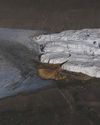
The Case of the Bleeding Glacier
It's a gory sight called Blood Falls. Ever since British geologist Thomas Griffith Taylor first noted it in 1911, it has been a mystery.
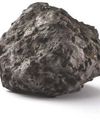
Asteroid Samples Are Said to Hold Invaluable Secrets
If Only Scientists Can Pop the Lid!
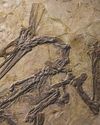
Paleontologists Embrace a New Method for Seeing Fossils within Rock
Fossil bone can be delicate. Attempts to remove it from a hard rock matrix by picking and scratching or etching with acids can be time-consuming and/or may end up obliterating that which you hope to study.

Need a Map of the Ocean Floor?
Call in the Seals!
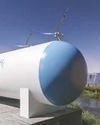
A Step Closer to Hydrogen, the "Climate-Friendly Fuel"
As I reported last June, the world is racing to find sustainably renewable, nonpolluting sources of energy to replace our carbon-based reserves of coal, oil and gas.